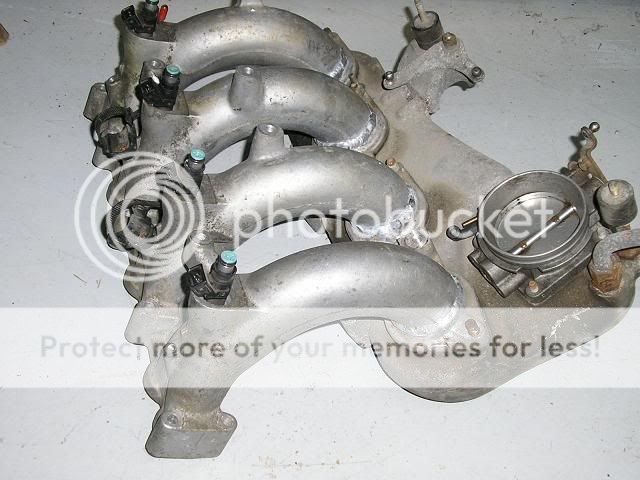I'm not an engine designer, nor am I an engineer whose expertise is fluid dynamics. But I will tell you what I know to be true based on my experience with my 16v.
In the 1980's Mercedes took their 2.3 cyl engine to Cosworth and had Cosworth design a cross-flow 16v head with the ultimate goal of Group B rally racing. To make a long story short, Audi came out with the Quattro at the same time and since MB's intended car was NOT 4wd they went road racing instead.
What resulted was the German Touring Car Campionships or Deutsche Tourenwagen Meisterschaft (DTM). The final Evolution of Mercedes' 16v street car that was fielded was the 190E 2.5-16 Evolution II. In race trim in weighed around 1000kg (2200 lbs) and the 2.5L 16v 4-cylinder NATURALLY ASPIRATED engine put out in excess of 370 hp. Redline was somewhere north of 9,000 rpm.
I mention this because the race cars were equipped with individual throttle bodies (ITB) that used a guilllotine style valve (as opposed to the butterfly style in most production applications). This is a very popular intake system mod for owners of street going mercedes 16vs to undertake in an effort to gain more power.
The problem is that while ITBs sound great and generate great hp up top, the short intake runner length (typically not much more than 200mm) does nothing for low end torque.
The stock Mercedes 16v motor is fed by a Bosch KE Jetronic injection system. It's a multi-port, continuous fuel injections system that was popular on porsches and VWs as well. The block is canted to the passenger side by 15 degrees and the intake runners loop UP from the cylinder head and then back down to the intake plenum which is located almost 1/2 way down the engine block. The actual runner length is over 300mm (12"). The reason for such a long intake runner is to aid in daily drivability by generating more torque.
*** NOTE - The pictured intake manifold has been shortened from stock by 50mm. As you can see, they're still pretty long.
In case anyone missed that I'll re-state:
The engineers designed an intake manifold with a longer intake runner
specifically for the purpose of increasing torque.
The point of all of this typing? A longer intake path can be, in the right circumstances, beneficial to power gains. I THINK, I'm not sure, but I THINK the reason why this concept worked for MB is because the runners are narrow as well, which, if I remember my fluid dynamics correctly actually helps to accelerate laminar airspeed towards the centre of the runner.
I'm not saying that the spacer WILL work on the 4.0 but there's a possibility that it could. And if it does work it probably has more to do with the increased intake path length than the "vortex effect".



